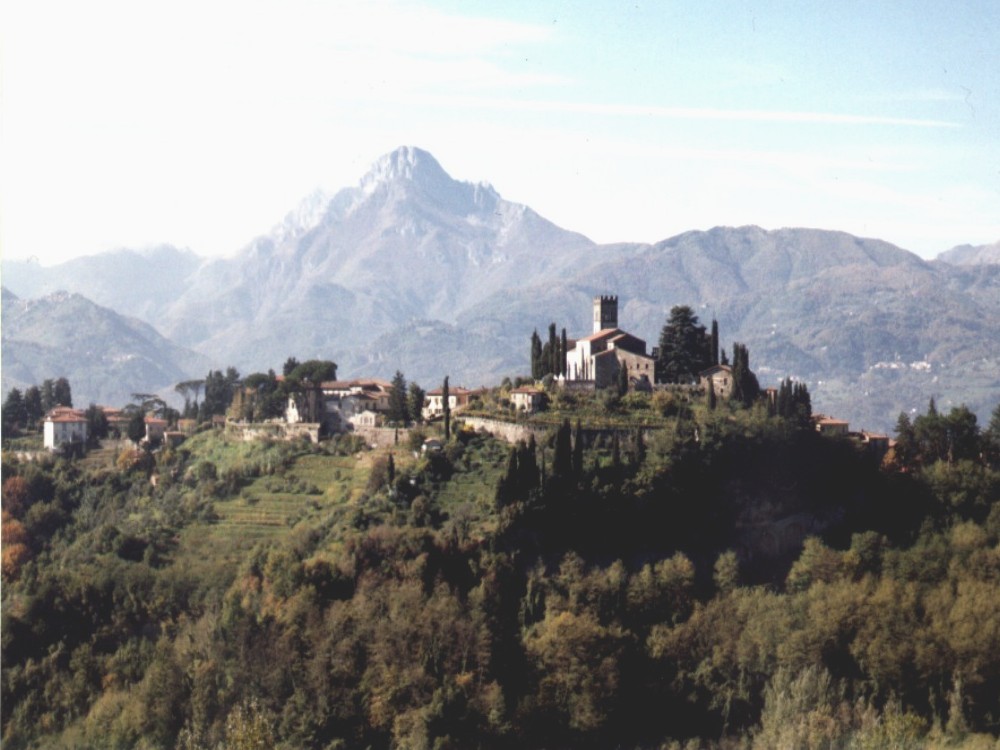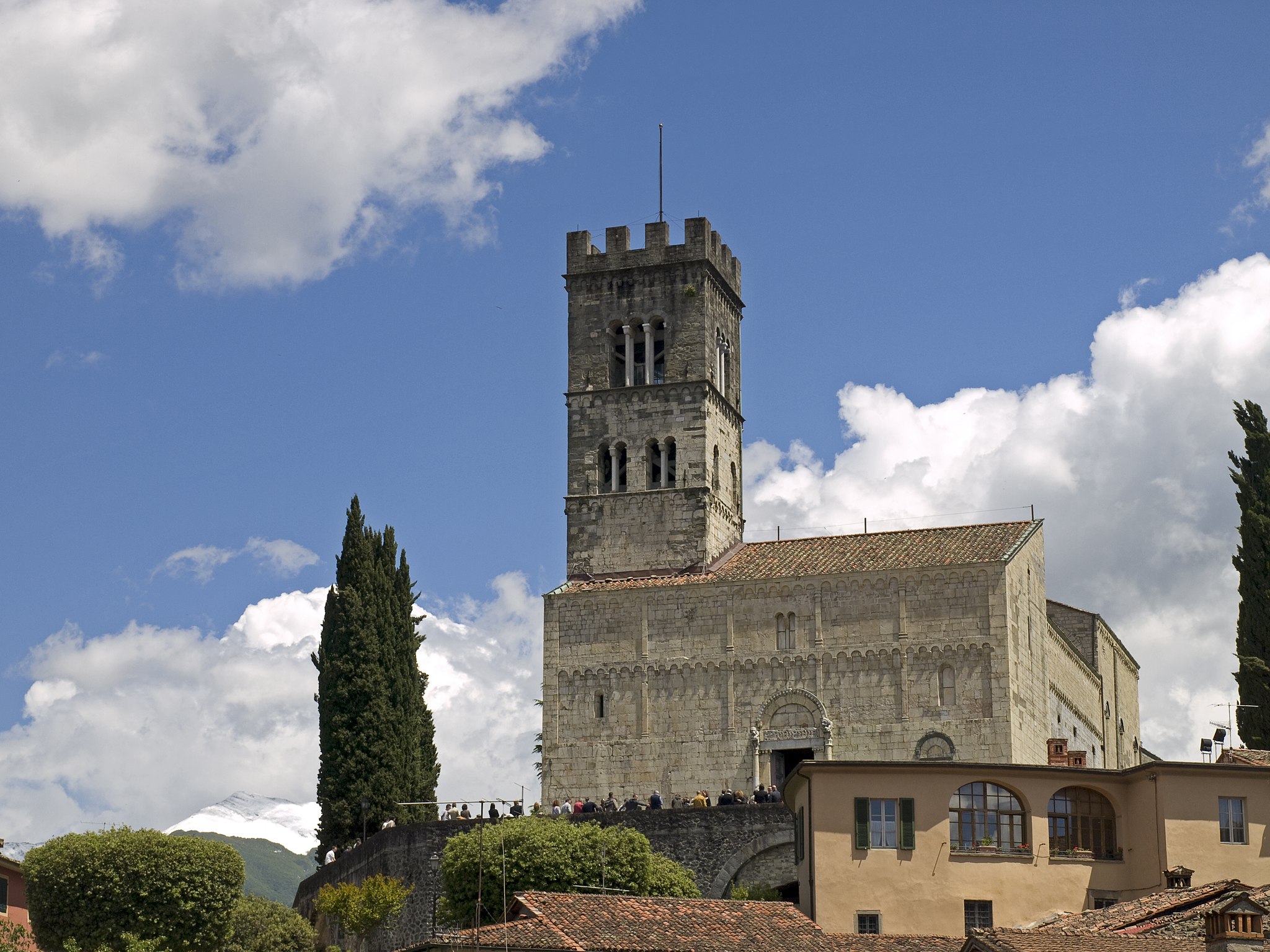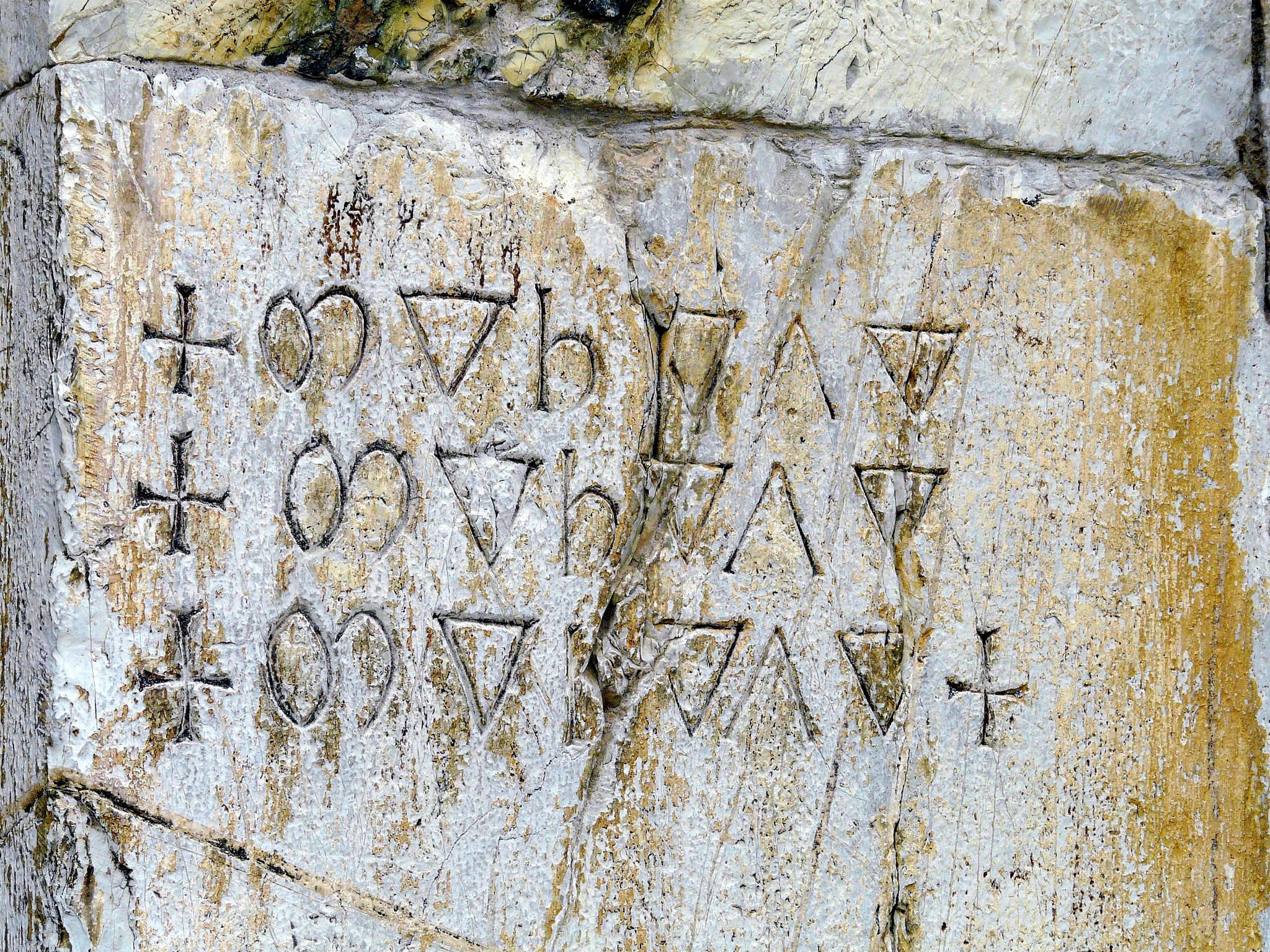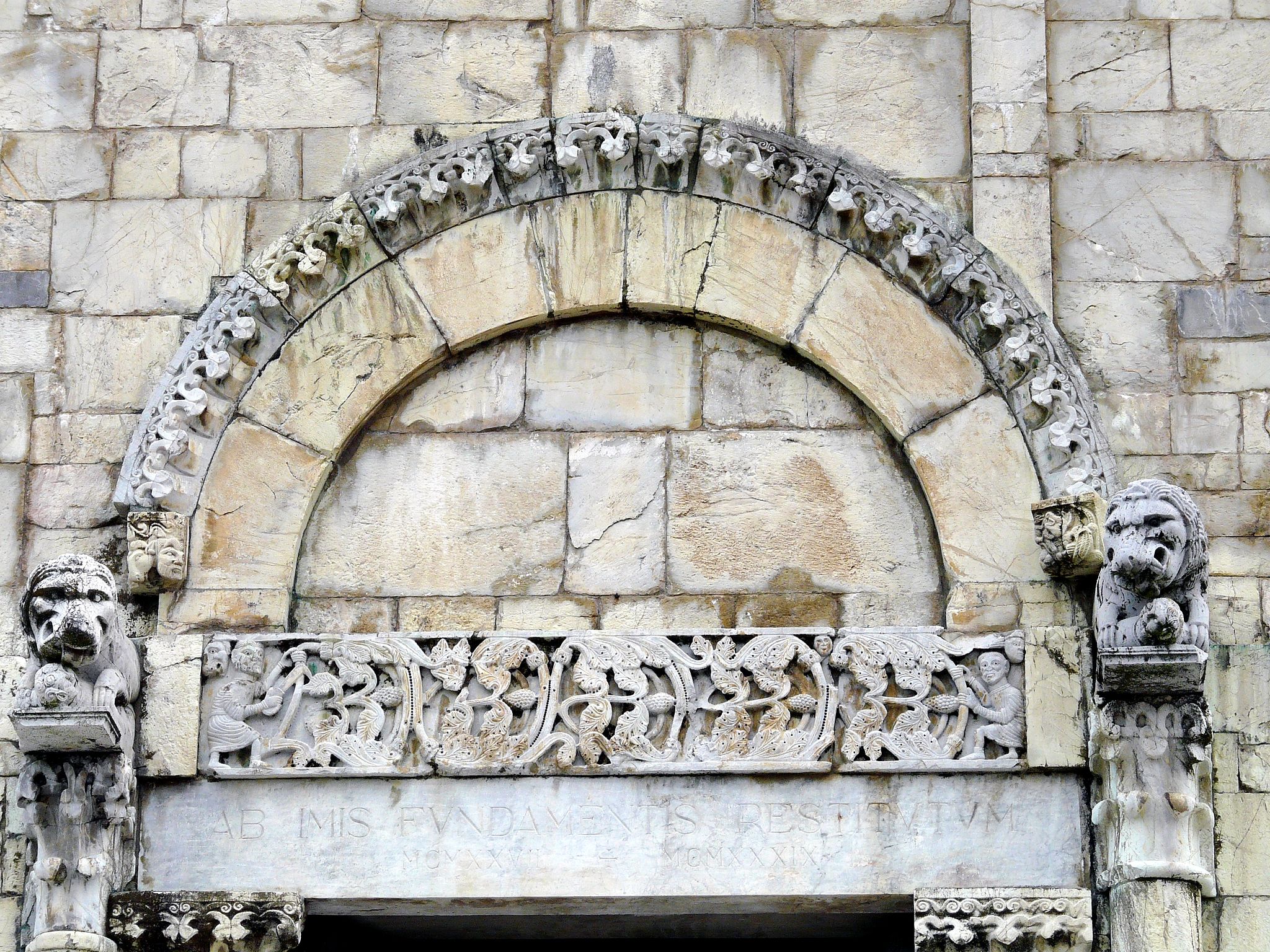Barga |
Barga is a medieval town and comune of the province of Lucca, situated on the promontory of a mountain spur, in the beautiful forested area of Northern Tuscany. It is overlooked by the village of Albiano, a località of Barga, which in the 10th century was the site of a castle protecting the town. In the Middle Ages, Lucca and Pisa battled frequently to conquer the flourishing town and the surrounding territory. Florentines also fought for the dominion of Barga and later it became a stronghold of The Medici's Florence. Against the often fiercely independent republic of Lucca, and the Dukes of Este, or ubiquitous Visconti, it was known as Barga Fiorentina. The Italian Touring Club has recently assigned the orange flag of the Migliori borghi d'Italia ("Best Villages of Italy), a distinguished sign recognizing the peculiarity of its beauty and of its quality.
Duomo di Barga |
The Cathedral (Duomo) of Barga [2]
|
| Barga’s cathedral is situated in Piazza Ser Barghesano and it was built between the 11th and the 16th centuries. It is the main example of Romanesque architecture in the Serchio Valley. Of the original church, built in local limestone, parts of the façade remain. The interior has a nave and two aisles. It houses a large (3.5 m) wooden statue of St. Christopher, patron of the city. The pulpit (12th century) was designed by Guido Bigarelli da Como, with four red marble columns resting on lion sculptures. The campanile contains three bells, the oldest of which dates to the 16th century.
|
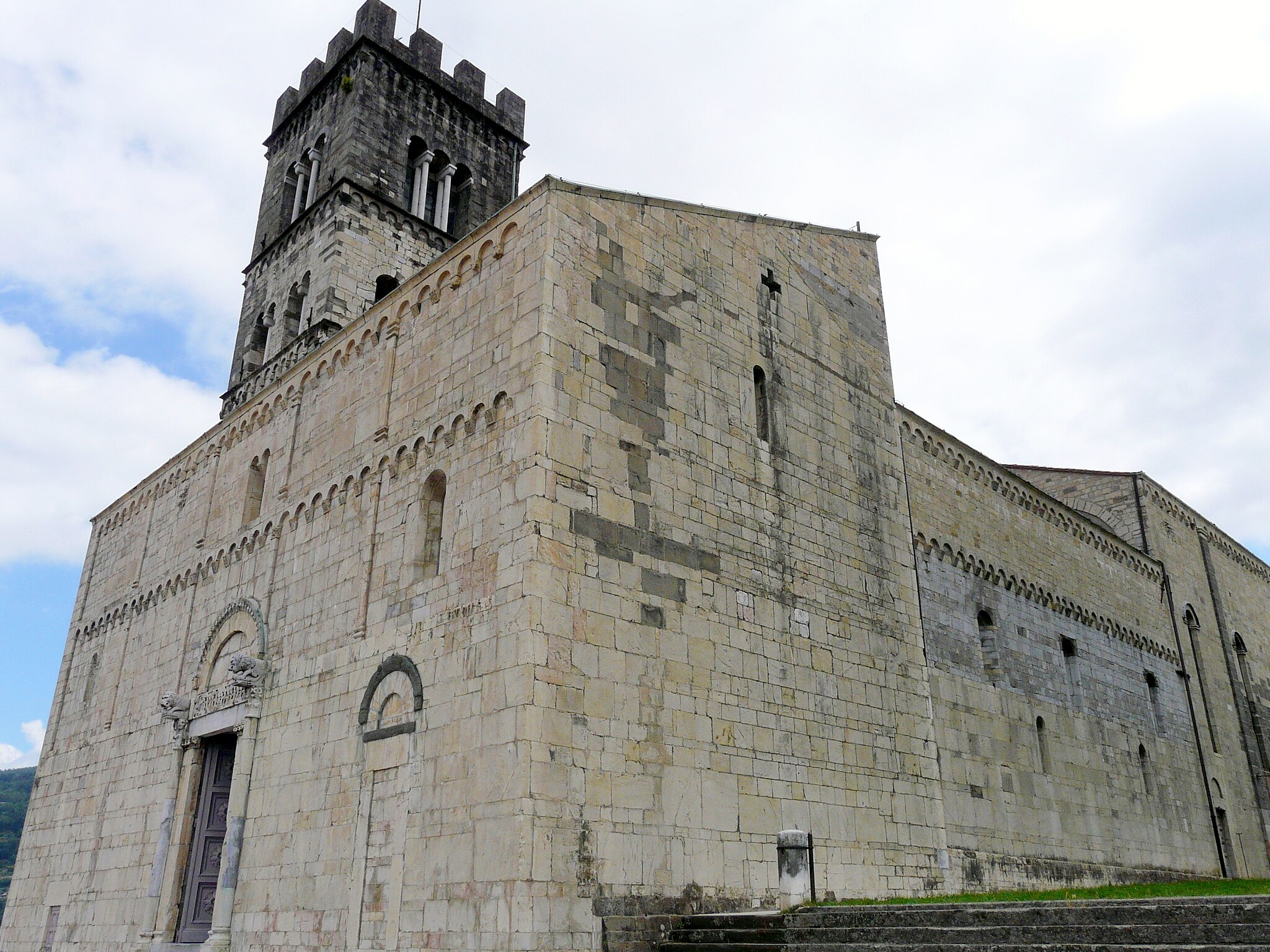 Duomo di Barga, Toscana, Italia [4] |
|
|
||
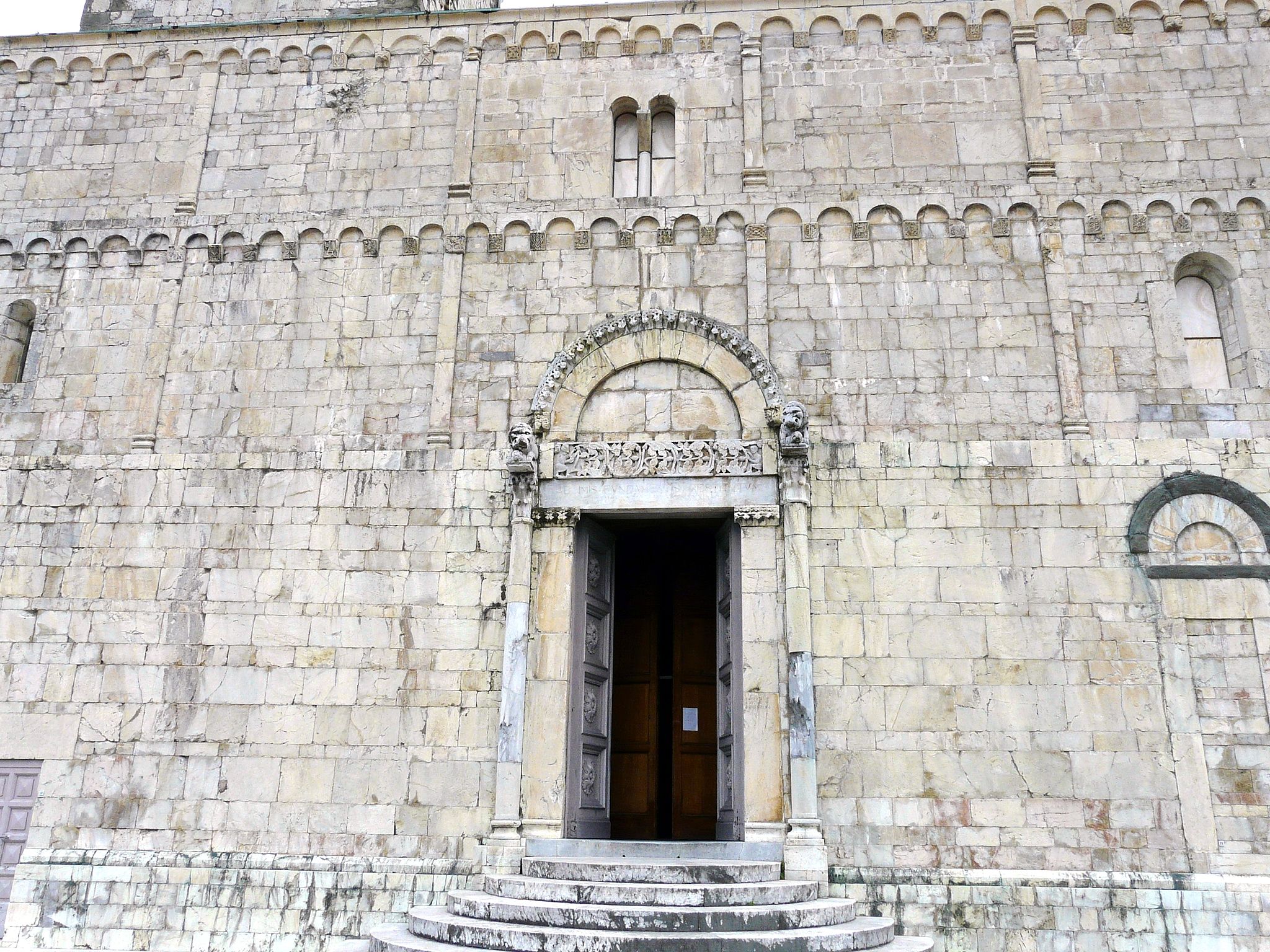 |
||
Duomo di Barga, Toscana, Italia [4]
|
||
| The church was built with white marble from the quarries near the town, and sited on a hilltop acropolis. The west front is a square wall with a castle-like bell-tower. The main Romanesque portal has two semi-columns with carved lion capitals; above is an arch and decorations with leaf motifs. One façade block has a repeated cryptic inscription. The church has a central nave, and two lateral aisles. It contains some 12th- or 13th-century fonts, one with a carving depicting John the Baptist. The first pilaster has an ancient degraded fresco of Saint Lucy. The pulpit is carved with scenes from both the Old and New Testaments, and two support columns have lion bases. One of the scenes is an Annunciation, another the Nativity. A polychrome wood statue of the patron saint, Saint Christopher (Cristofano), stands behind the main altar. The chapel on the right has terra cotta by the studio of Della Robbia. The left chapel is dedicated to the Madonna del Molino; a 14th-century image of the Madonna is on a canvas depicting Barga circa 1500. Arringo, a large lawn between the Duomo and the Palazzo Pretorio, the Loggia del Podestà (14th century), San Francesco, church with several works by Andrea della Robbia, Santissima Annunziata church and Santissimo Crocifisso 15th-century church. The Italian poet Giovanni Pascoli spent a long time in Castelvecchio Pascoli, a “frazione” (hamlet) of Barga. In this town you can still find the Casa Museo Pascoli and he is buried in the adjoining chapel. |
|
|
|
||
Particolare dell'ingresso principale del duomo di Barga [4]
|
||
Other sights
|
||
Arringo, a large lawn between the Duomo and the Palazzo Pretorio, the Loggia del Podestà (14th century), the San Francesco church with several works by Andrea della Robbia, Santissima Annunziata church and Santissimo Crocifisso 15th-century church. The Italian poet Giovanni Pascoli spent a long time in Castelvecchio Pascoli, a frazione (hamlet) of Barga. In this town you can still find the Casa Museo Pascoli and he is buried in the adjoining chapel.
|
||
San Giusto in Tiglio
|
||
 |
||
Panarama and Church of San Giusto in Tiglio (Alto), hamlet of Barga, Province of Lucca, Tuscany [3]
|
||
[1] Source: CC BY-SA 3.0, https://commons.wikimedia.org/w/index.php?curid=629250 [2] Photo by Ymblanter, licensed under the Creative Commons Attribution-Share Alike 4.0 International license. [3] Photo by LigaDue, licensed under the Creative Commons Attribution-Share Alike 4.0 International license. [4] Photo byDavide Papalini, licensed under the Creative Commons Attribution-Share Alike 3.0 Unported license. |
||
Kerry Bell , Barga Tuscany: A walking tour of the historic center of the beautiful medieval hill town of Barga, (Lucca) Tuscany, 2011 |
||||
 |
||||
Podere Santa Pia has been beautifully restored and overlooks a valley characterised by all the elements of the Tuscan landscape: vineyards, pastures, small forests, wheat fields, olive groves and downey oaks. On a clear day you can see as far as Corsica to the south.
|
||||
This article incorporates material from the Wikipedia article Barga and Collegiate Church of San Cristoforo , published under the GNU Free Documentation License. |
||||

